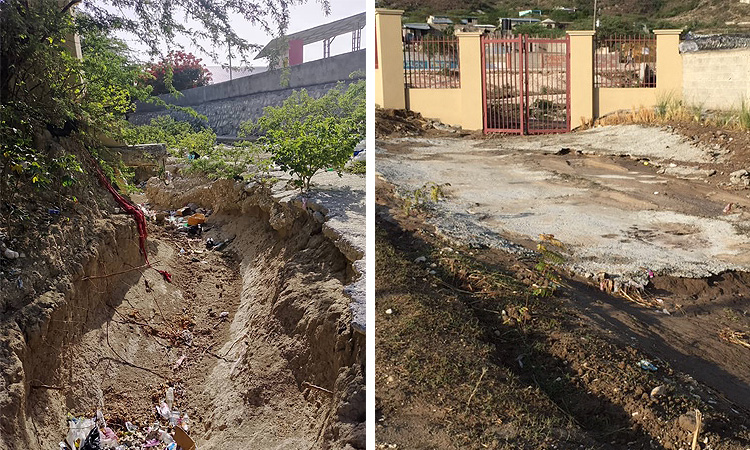We usually think of Haiti’s environment as dry, dusty, and undergoing “desertification,” where once healthy soil is suffering prolonged droughts and degradation from poor agricultural practices and deforestation. A lot of our work at the Agricultural Training Center (ATC) involves teaching sustainable methods of dealing with the desertification going on in Haiti. But now we are in the “hurricane season” and the storm Melissa is threatening Haiti. Even if Haiti does not get a direct hit from strong hurricanes, it usually has periods of extreme rainfall. We might think this is good because they need so much more rainfall, BUT this is a time when there could be “too much of a good thing.”
Deforestation and poor traditional farming practices have left Haiti incapable of handling the heavy rainfall common in hurricane season. With little to no trees or vegetation to shelter the bare ground from the pounding rain, the rainfall just runs off too fast, creating terrible erosion and dangerous flooding.
However, there are simple, easy practices that we teach that can help reverse that problem. We teach simple methods like making “check dams” across hillsides and shallow waterways, and digging many small crater-like holes to capture rainwater. You don’t have to stop the runoff entirely; just slowing it down has great benefits. The check dams, even one or two stones high, are effective at slowing the cascading runoff and allowing it time to soak into the dry ground. The small holes, or “zai holes,” capture the running water and topsoil, allowing water to soak in and capturing eroding topsoil, allowing natural seeds to take root more easily. Over time, these simple measures help the land recover.
So, even though Haiti may get too much of a good thing during this hurricane season, we are teaching methods to turn the rainfall into an advantage and improve the environment.
Thank you for supporting our Development for Sustainability programs. God bless you.
Rad Hazelip, Assistant Executive Director


